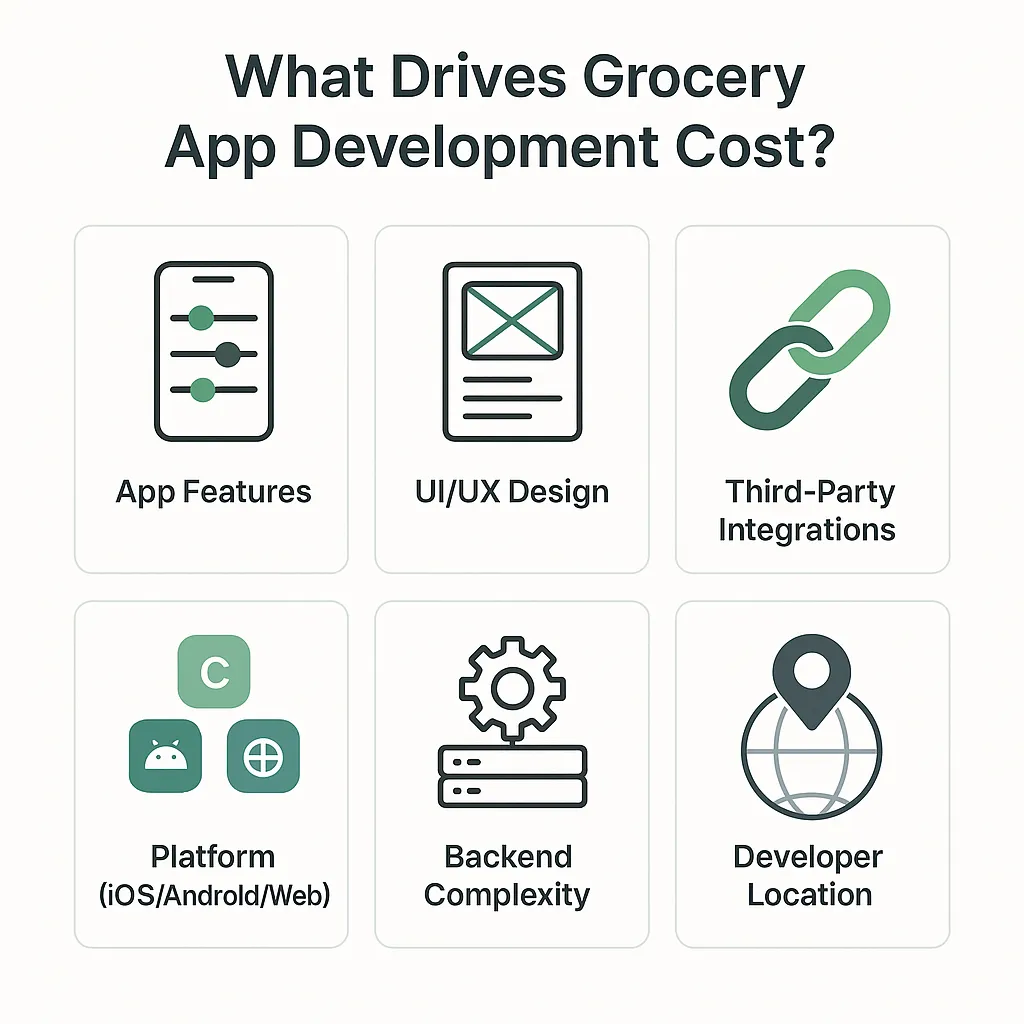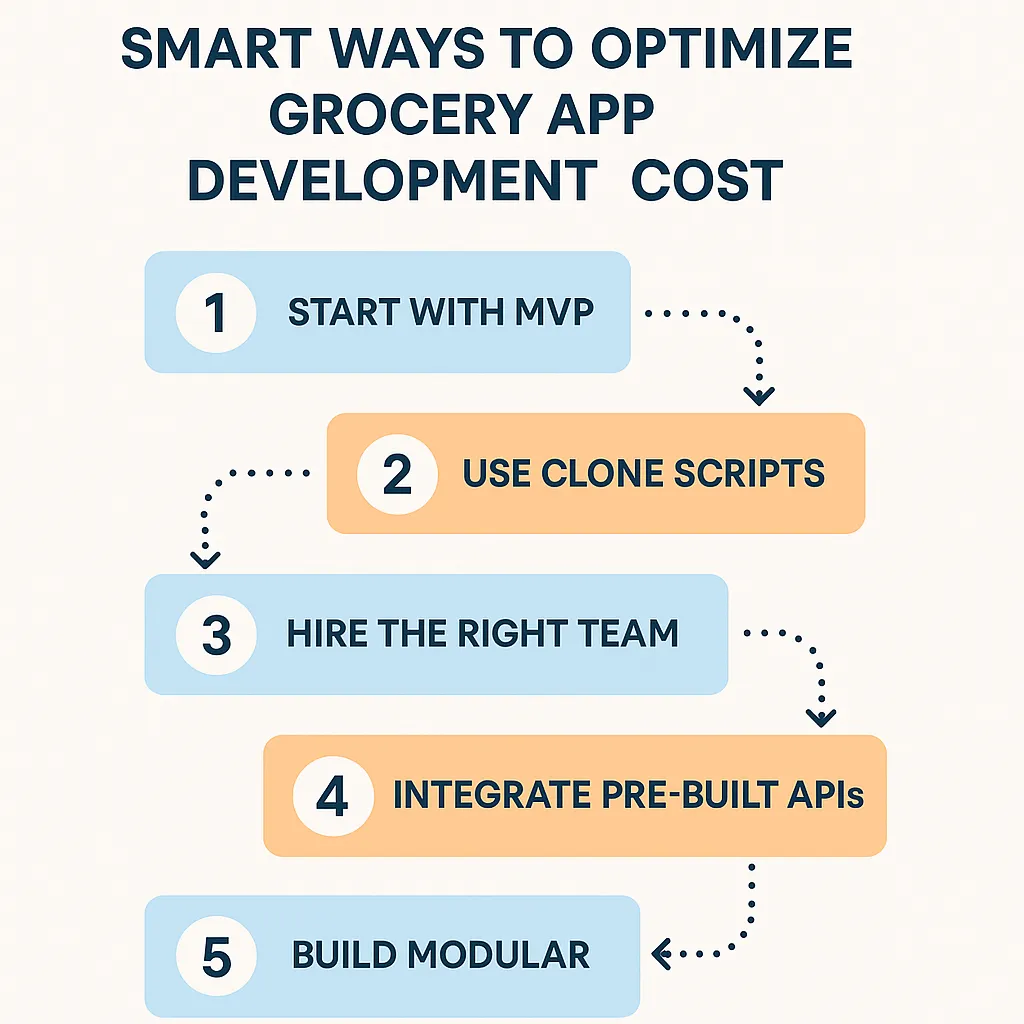FreshDirect App Development Cost in 2025 : Full Guide
Create a powerful, customizable streaming solution with Miracuves’ FreshDirect, equipped with high-performance features and next-gen technology.
Thinking of launching your own online grocery delivery platform like FreshDirect? Before jumping into features or logistics partnerships, it’s crucial to understand what it really takes — and costs — to build an app like this.
A FreshDirect-style app goes beyond basic delivery tracking. It’s a full-fledged grocery tech ecosystem involving inventory sync, personalized shopping experiences, real-time availability, and backend automation. Whether you’re a startup aiming to serve a single city or an enterprise targeting multiple regions, your development strategy starts with knowing the budget landscape.
In this guide, we’ll walk through the real numbers behind FreshDirect app development cost — including what drives pricing, how it varies by region, complexity levels, hidden costs, and ways to optimize your budget without sacrificing quality.

Key Factors That Influence Development Cost
The cost of developing a FreshDirect-like grocery app depends on how large your vision is and how you plan to execute it. Here’s what influences your total spend:
Feature Scope & Functionality → A simple ordering system costs less than a platform with real-time inventory, repeat purchases, AI-powered recommendations, and delivery slot optimization.
UI/UX Design Quality → Clean, fast, and intuitive design increases conversion rates but requires skilled front-end development and prototyping.
Platform Coverage → Supporting iOS, Android, and web multiplies development and testing time.
Third-Party Integrations → You’ll need to integrate payment gateways, delivery APIs, SMS/email providers, and inventory or warehouse software.
Backend Complexity → Features like cart logic, order status updates, cold-chain handling, and route optimization demand a robust backend.
Team Location → Costs vary widely depending on whether your team is based in the U.S., Europe, or Asia.
FreshDirect App Cost Estimates by Type
To help you make informed budgeting decisions, it’s essential to understand how the FreshDirect clone app development cost scales with scope and complexity. Whether you’re aiming for a lean MVP to validate your idea or a fully-loaded grocery delivery ecosystem, each version has a different price range based on required features, development time, and design depth.
|
App Type
|
Estimated Cost Range (USD)
|
Description
|
|---|---|---|
|
MVP (Minimum Viable Product)
|
$15,000 – $30,000
|
Core features like user registration, product browsing, shopping cart, basic checkout, and delivery scheduling. Ideal for early-stage validation.
|
|
Standard Version
|
$30,000 – $70,000
|
Adds search filters, real-time inventory, promo codes, admin dashboard, user analytics, and notification systems for a more complete experience.
|
|
Full-Featured App
|
$70,000 – $150,000+
|
Includes AI recommendations, delivery tracking, loyalty programs, subscription models, 3rd-party integrations, custom UI/UX, and scalable infrastructure.
|
Average Cost Estimates by Region
Where your development team is based has a major impact on the total cost of building a FreshDirect-like app. Here’s a regional breakdown:
|
Region
|
Hourly Rate (USD)
|
Typical Cost for Standard App
|
|---|---|---|
|
North America
|
$100 – $200/hr
|
$100,000 – $200,000+
|
|
Western Europe
|
$80 – $150/hr
|
$80,000 – $160,000+
|
|
Eastern Europe
|
$40 – $80/hr
|
$40,000 – $90,000+
|
|
India & Southeast Asia
|
$20 – $50/hr
|
$20,000 – $60,000+
|
Offshoring to India or Eastern Europe can offer up to 60% savings — especially with experienced grocery-tech development teams.
Cost Breakdown by Development Stage : FreshDirect Clone
Understanding how your FreshDirect clone development budget is distributed across stages can help you plan more efficiently, avoid hidden costs, and set realistic milestones. Each phase plays a vital role in bringing your grocery delivery platform to life — from concept to ongoing support.
Here’s a stage-by-stage breakdown:
|
Development Stage
|
Estimated % of Total Cost
|
Includes
|
|---|---|---|
|
Discovery & Planning
|
5–10%
|
Market research, competitor analysis, defining user personas, feature scoping, technical requirements.
|
|
UI/UX Design
|
10–15%
|
Wireframing, prototyping, responsive design, visual branding, user experience mapping.
|
|
Frontend & Backend Dev
|
40–50%
|
Core feature development, database architecture, APIs, payment integrations, dashboard and logic build.
|
|
Testing & QA
|
10–15%
|
Manual and automated testing, bug fixing, device/browser compatibility checks, performance tuning.
|
|
Deployment & Launch
|
5–10%
|
App store submission (Android/iOS), server setup, production deployment, performance monitoring tools.
|
|
Maintenance & Updates
|
10–20%
|
Post-launch bug fixes, new features, server maintenance, user support, compliance updates.
|

Tips to Reduce Development Costs Without Compromising Quality
Smart planning can save money without cutting corners. Here’s how to optimize your grocery app build:
Start with an MVP → Launch with core features, gather user feedback, and scale iteratively
Use clone or white-label solutions → Miracuves-ready scripts help you go live faster and at lower cost.
Choose a specialized team → Look for proven grocery-tech developers with backend and logistics expertise
Leverage off-the-shelf integrations → Use trusted APIs for logistics, payments, and SMS instead of building custom
Plan for modular upgrades → Use scalable architecture to add features like loyalty programs, analytics, and AI later
A thoughtful roadmap keeps you lean in early phases and ready to scale when the time is right.
Choose the Right Development Partner
Even with a solid plan, grocery delivery app like FreshDirect is complex build — and your development partner will make or break the project.
Here’s what to look for:
Experience building grocery, retail, or logistics apps
Track record of scalable, high-performance clone apps
Full-service capabilities — from UI to launch and scaling
Security-first backend architecture and robust API handling
At Miracuves, we specialize in building high-performing, modular grocery delivery apps inspired by FreshDirect. From design to backend logistics — we deliver solutions that scale with your business.
Let us handle the tech, so you can focus on delivering value to your customers.
Conclusion
The cost to develop a FreshDirect-style grocery delivery app can range from $30,000 to $250,000+, depending on the features, tech stack, and development approach. Whether you’re launching an MVP or building a full-scale platform, understanding these factors helps you plan efficiently and scale smartly.
Need a personalized cost estimate for your app idea? Our team at Miracuves can provide a custom quote tailored to your needs.
Curious about monetization strategies or competitive features to include in your grocery app? Check out our related guides for more insights.
Frequently Asked Questions
The typical range is $30,000 to $250,000+, based on features, team location, and platform complexity.
Product listing, cart, checkout, user login, and basic delivery tracking are must-haves for a functional MVP.
Yes. Clone solutions can reduce cost and time-to-market by up to 50%, especially if you partner with a company like Miracuves.
MVPs usually take 3 to 4 months, while full platforms may require 6 to 9 months, depending on feature scope.
Miracuves brings deep expertise in grocery delivery, logistics, and scalable app infrastructure — with ready-to-customize clone scripts and end-to-end support.



